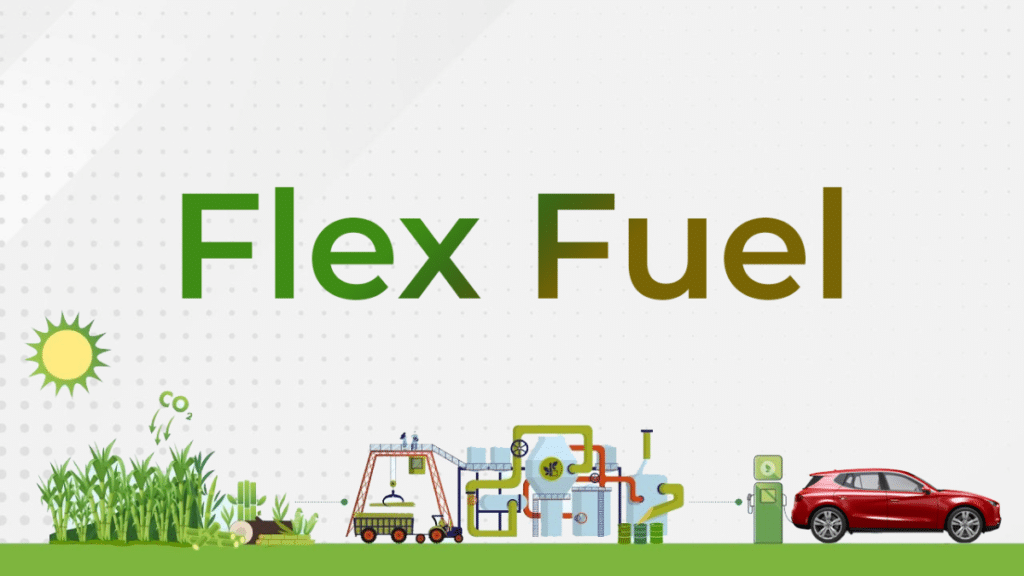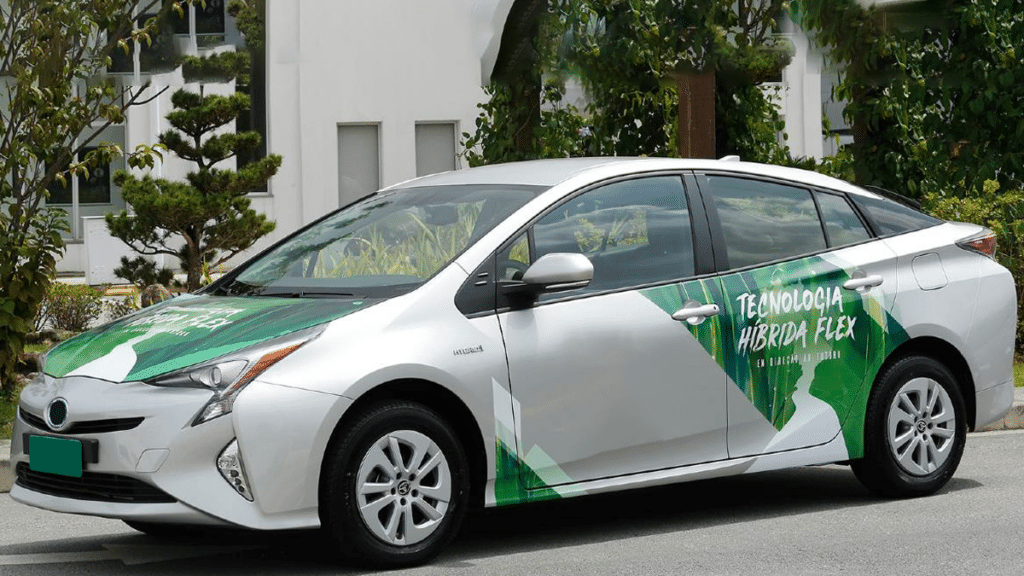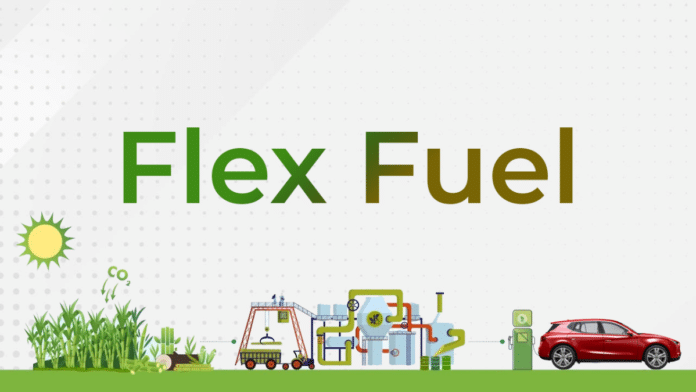Introduction to Flex fuel and its difference between gasoline
A flex-fuel can be described as a combination of petrol and ethanol. These vehicles are designed or manufactured in a way that they are capable of handling more than one type of fuel. The flex-fuel vehicles are composed of internal combustion engines and there is some difference between these vehicles and normal gasoline vehicles. There is a slight modification in the fuel system and the engine system in these vehicles when compared to normal gas vehicles. Flex-fuel vehicles are capable of running on petrol, ethanol, and also in methanol. Flex fuel is also known as flexible fuel and this is a cleaner and greener fuel which will be really good for our environment.
What is the difference between the Flex fuel vehicle and the Gasoline vehicle?
As we discussed earlier there is a slight modification in the engine and fuel section of the Flex fuel vehicle. There won’t be any change in the performance of the FFV. In certain cases, the Flex fuel vehicle generates more power than the gasoline vehicles. Ethanol has low energy when compared to gasoline per volume and due to this, the fuel economy will be lower than the gasoline vehicle.

Flex fuel is less costly than petrol and for the production of ethanol sugarcane and corn are required. This will make a huge difference in crude oil imports. Power train calibration of the FFV and the gasoline vehicle is different. Due to the blending of ethanol in flex-fuel, the pollutants will be really less when compared to the gas engine vehicle. The FFV is capable of burning any proportion of the fuel mixture in its combustion chamber. Most of these vehicles will have certain sensors to maintain the fuel injection and timing. Sustainability is another advantage of flex-fuel when compared to normal gas because ethanol is created from plants.

What is an E20 fuel, is it better than petrol?
The blending of ethanol with petrol is called an E20 fuel, mostly 20% of ethanol will be blended with the petrol. Due to the higher octane rating, the performance of the Flex fuel vehicle is really good.
Does Indian Vehicle support flex fuel?
The BS6 stage2 compliant motorcycles support the flex fuel. These motorcycles support a fuel blend up to 20 percent. The flex-fuel vehicles in India are manufactured in a way that they can run on petrol and ethanol.
How does a Flex fuel vehicle work?
As we discussed earlier most of the components of the flex fuel vehicle are the same as the conventional fuel vehicle. There is one fuel system in the flex fuel vehicle and most of the components are similar to the conventional vehicle. There are some extra components in flex-fuel vehicles to achieve ethanol compatibility. The components that are used in the FFV can compensate for the chemical properties of the flex fuel. There will be slight modifications in the fuel pump and also in the fuel injection system in FFV. Ethanol has higher oxygen content and because of this, the electronic control module in the FFV will be calibrated.
What are the major components of Flex fuel vehicles?
The FFV components are also the same as the normal gas engines. The FFV has a battery, ECM, exhaust system, fuel filler, fuel pump, fuel injection system, internal combustion engine, transmission, and fuel tank. We can see all these components in the normal gas engines.
What is the price of flex-fuel and can it provide good mileage?
When compared to the normal gas vehicles the mileage of the FFV is low. As of now the price of flex-fuel is really less when compared to the normal gas.
How flex fuel can make changes in the Indian economy and what are the other advantages of using flex fuel?
In India, the ethanol blend in petrol has increased from 1.5 to 11% during the year 2014. This change has created a massive cut-off in the oil import which cost more than 40000 crores. The usage of flex-fuel has improved the Indian economy and also it can reduce environmental pollution because flex-fuel vehicle emission is really low when compared to normal gas engines. If the implementation of E20 is completed then more than 30000 crores can be saved annually. There is one disadvantage of the flex fuel vehicle and it is the low fuel efficiency. To compensate for this problem in the future there is a plan to develop electrified flex-fuel vehicles.
Flex fuel can reduce environmental pollution a lot because of its emission features. The number of vehicles in India is increasing day by day so flex-fuel vehicles will be really useful in solving many environmental problems.
How Automation sector is utilized in Flex Fuel manufacturing?
In flex oil manufacturing the design of the control system and the field instrumentation is done with the help of automation. If the flex fuel manufacturing plant is automated then it will improve the efficiency and also the quality of the operation. Production efficiency improvement is the major advantage of automating the flex fuel manufacturing plant. The manufacturing process involves enzymatic hydrolysis, distillation, etc. All these manufacturing processes can be controlled by the integrated production control system.
What are the changes that flex-fuel can bring in the Oil and gas sector?
If the consumption of flex fuel increases then it will affect the Oil and gas sector. Flex fuel is greener than gasoline and due to this, the usage of gasoline can be reduced. But flex fuel provides less mileage than gasoline and this could be a problem. Ethanol could be a challenge to the oil and gas sector but as of now, the oil and gas sector is growing day by day.
What are the advantages of a Flex fuel vehicle?
- Flex fuel is cheaper than petrol
- Environment friendly
- Crude oil requirements will be reduced
- These vehicles are capable of operating up to 83% blend of gasoline and ethanol
- It can work on both gasoline and gasoline-ethanol blends
- If the ethanol blend increases then it will improve the performance of the vehicle
- Low emission rate
- Emission standards can be met
- Less CO2 emission
- Oil imports can be reduced
- Advanced technology to detect the fuel mixture range, operating method, etc
- Reduction in tax
What are the disadvantages of the flex-fuel vehicles?
- If the ethanol level increases then the fuel economy decreases
- Ethanol blend fuel storage can release several pollutants
- Low-level ethanol blending can cause the gasoline to evaporate really fast
- It could affect the quality of the engine
- Less Flex fuel stations
- Natural crops such as sugar cane will be extensively used for the production of ethanol
Author – Ashlin AJ

